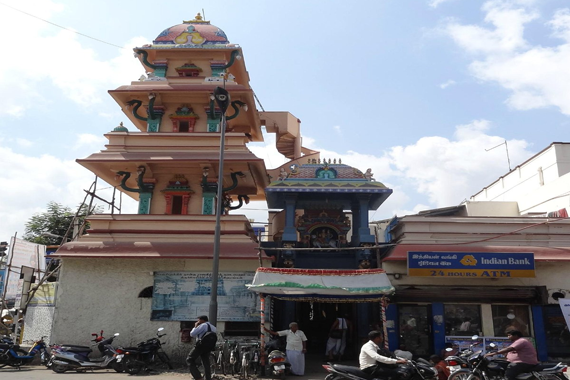SRI KANCHI KAMAKOTI PEETAM
Sri Kanchi Kamakoti Peetam, also called the Sri Kanchi Matham or the Sri Kanchi Monastery or the Sarvagna Peetha, is a Hindu institution, located in Kanchipuram, Tamil Nadu. It is located near a temple dedicated to Goddess Sri Kamakshi (Durga, Kamakoti, Maha Tripurasundari) of the Shaktism tradition, along with a shrine for the Advaita Vedanta teacher Adi Shankara. The matha-tradition attributes its founding to Adi Shankara, but this and the reliability of the matha’s succession list has been questioned. The Kanchi Math was originally established as the Kumbakonam Mutt in 1821 as a branch of the Sringeri Mutt, and later became involved with the Kamakshi temple in Kanchipuram. According to the Sri Kanchi math tradition, the matha was founded at Kanchipuram, and shifted south to the temple city of Kumbakonam in mid-18th-century due to the on-going wars, when there was warfare in the region, and returned to Kanchipuram in the 19th century. The matha is a living tradition, which continues to pursue spiritual scholarship in contemporary times. The head of the matha is referred to as an “Acharya” or “Sankaracharya”. Since February 2018, the institution has been led by Vijayendra Saraswathi Shankaracharya Swamigal.

The founding of Kanchi Kamakoti Peetam is traditionally attributed by its adherents to Adi Shankara, but this and the reliability of the matha’s succession list has been questioned. Sringeri matha rejects the claims of Kanchi Kamakoti Peetam, and does not count it among the mathas established by Shankara. According to Clark, the story of the four cardinal mathas founded by Shankara dates from the 16th century, questioning the founding stories off all those mathas. The Kanchi Math was originally established as the Kumbakonam Mutt in 1821 by the Maratha king of Tanjore, Serfoji II Bhonsle, as a branch of the Sringeri Mutt. It became an apostate schismatic institution in 1839 when the Kumbakonam Mutt applied for permission to the English Collector of Arcot to perform the “kumbhabhishekham” of the Kamakshi temple in Kanchipuram. In 1842, the East India Company headquartered at Fort William, Calcutta appointed the head of the mutt as the sole trustee of the Kamakshi temple, despite the protests of the traditional priests of the Kamakshi temple, which are well documented and preserved. According to the Kanchi matha’s tradition, their monastery was founded in Kali 2593 (509 BCE) by Adi Shankara. According to the Sri Kanchi matha documents, the matha relocated completely to Kumbakonam in mid-18th century to escape wars and persecution. According to Jonathan Bader and other scholars, the monastic tradition gives “fear of Muslim atrocities” from Nawab of Arcot, Mysore’s Hyder Ali and Tipu Sultan as the reason, but the details remain unclear.

According to T. A. Gopinatha Rao, copperplate inscriptions show that the matha was located at Kanchipuram until 1686 CE, and relocated to Kumbhakonam, Tajore, in the 18th century. According to Rao, based on the oldest record found in the respective mathas (1291 and 1346 respectively), Kanchipuram matha may be older than Sringeri Pitham. The matha returned to Kanchi in the 19th century. The successive heads of the Kanchi and all other major Hindu Advaita tradition monasteries have been called Shankaracharya leading to confusion, discrepancies and scholarly disputes. The chronology stated in Kanchi matha texts recognizes five major Shankaras: Adi, Kripa, Ujjvala, Muka and Abhinava. According to the Kanchi matha tradition, it is “Abhinava Shankara” that western scholarship recognizes as the Advaita scholar Adi Shankara. Scholars such as William Cenkner, Christopher Fuller and David Smith dispute this traditional belief, though they accept that the Kanchi Shankaracharyas are his direct “spiritual descendants”. The 70th Shankaracharya, Sri Sankara Vijayendra Saraswati is the current Shankaracharya, before which, the matha was headed by Sri Jayendra Saraswathi, the 69th Shankaracharya. The Kanchi monastery, along with its sister monasteries across India, has also been an important preserver and source of historic palm leaf manuscripts.